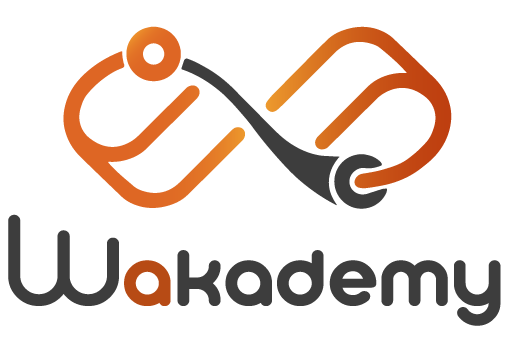
The art of the didgeridoo
THE ESSENTIALS
A course designed for all beginners, that is designed to help you:
- Master your breathing, once and for all. Be able to play without stopping (and without suffocating yourself!)
- Cultivate a clear and powerful sound
- Feel rhythms intuitively without any formal musical training
- Learn all the essential techniques for playing didgeridoo
- Develop good habits from the start
Based on my experience, 90% of once enthusiastic didgeridoo players give up before achieving their goals!
… be it for lack of time, lack of opportunities to share tips and experiences with other enthusiasts, or due to impasses concerning technique.
And that’s way too many drop-outs!
At the same time, I can certainly understand why: teachers are few and far between, interest groups are even rarer, organized meetings with other players hardly take place anymore…
And of course, if you are in the same position as most players, you’re starting out all on your own.
So, how can you know you ‘re on the right track? That you’re not developing bad habits that will waste your time and slow you down? Even worse, how can you find out the key skills to learn and the correct sequence to learn them in? Whether it’s circular breathing or more advanced techniques… Where to start? What rhythms should you play? Then what?
Yes, you might be among those who have all sorts of reasons to feel lost at this point!
Doesn't the didgeridoo come to you intuitively?
🤔
... Perhaps, to some extent --- for some rare players!
When I began playing didgeridoo at the end of 2001, it’s global popularity was quickly increasing, so there was a lot of new energy and new ideas. Enthusiasts found each other informally and through many groups that formed, and so forth. Every meeting was an occasion to hear and try to understand what new licks others had developed, and I have to say it was a golden time for learning and sharing.
But the situation wasn’t perfect for learning. Very few players understood what was happening inside their bodies or within their instrument. Most were in fact just playing intuitively.
It was often pointless to ask about the techniques behind what they had just played because few if any could explain it.
So many techniques remained hazy due to this lack of clear and tangible explanations.
We were stuck in the idea that “The didgeridoo is intuitive, so just relax and let it come!”
… Well, you know what? That hardly ever works! And it plays a large role in the number of players who give up…
To a great extent, it’s exactly that widespread vagueness in technique that inspired me to begin teaching the didgeridoo and to found Wakademy. I wanted to counter the difficulty of finding good instruction. I just don’t believe in the sort of intuitive playing that was happening.
A few said correctly that we shouldn’t let the intuitive side of didgeridoo cause us to miss the essential point:
The didgeridoo is a real musical instrument, happily inside its own universe of constraints and possibilities, laws, techniques, unique history and culture, and so on…
The didgeridoo is a real musical instrument
To commit to learning to play the didgeridoo is to plunge into its universe, one that I find to be absolutely marvelous and surprisingly rich. Believe me, you can’t fathom the vastness!
There are a thousand and one reasons you’ve started on the didgeridoo journey:
- the simple pleasure of playing it, the relatively free and intuitive (yes!) feel of the instrument compared to others
- your ability (or desire) to slide into a meditative state of well-being
- health reasons (I’m thinking about sleep apnea)
- or simply to be able to spend some good times with your musical friends…
That’s the magic of the didgeridoo: everyone has their own reason to love it, and for a lot of us, we’re responding to a higher calling of some sort (that was the case for me).
So now I’m offering to guide you through this wonderful adventure, while sprinkling a good measure of intuitiveness onto a solid base of knowledge.
And you’ll see, It’s all very tangible!
The key that opens all the doors: body awareness
Most of the time, the sounds coming out of a didgeridoo seem so mysterious, ethereal and organic that we give up trying to understand what’s happening… In reality, the sounds and effects are all tangible because they begin inside your own body!
Most didgeridoo techniques are invisible because most take place inside you. Thus you are going to have to learn to “turn the mental camera” onto yourself, particularly towards your insides to observe and feel what in fact is happening there.
All of my teaching is based on this single principle: body awareness.
By observing, you learn that what’s happening inside determines what you hear outside.
Tangibly, this means you’ll be able to achieve very precise sounds arising from simple articulations that are easy to imitate.
It’s a language unto itself.
Learning the didgeridoo is to learn a new “tongue.”
With the didgeridoo, there are no musical notes or scales to master. In their place we have onomatopoeia and syllables.
Together they form a common vocabulary.
Once you learn a few onomatopoeia, you only have to articulate them and string them together to create words, then phrases.
Considering didgeridoo sounds as a language, you will soon be able to enjoy the vibration, play some music, and spend time in a meditative state of well-being… Without counting a certain pride that comes from achieving that!
Because the good news is that as soon as you can say it, you’ll be able to play it.
As an example, this simple sequence of syllables make up a classic didgeridoo phrase:

First of all, articulate a TO and a KO, then make the WA sound by breathing in while expelling air with the cheeks, then articulate the last KO to finish.
You don't need to be a musician to start playing
You won’t need any prior musical training for the didgeridoo, whether in rhythms or theory, nor have an “ear for music”.
If you’re like me (and like a lot of other didgeridoo players), it’s very likely the didgeridoo will be your first foray into music.
In which case, welcome to the wonderful world of otherworldly sounds and pulsing rhythms!
I often mention it, but it bears repeating: before starting the didgeridoo, I was the anti-musician par excellence: no sense of rhythm, no ear … NONE of that!
And that’s why I always make a point of taking the time to explain things in a way that even I would have understood back then.
After all, if I succeeded, so can you.
Music can be learned. Don’t ever forget it.
Three learning phases that will turn you into a real musician
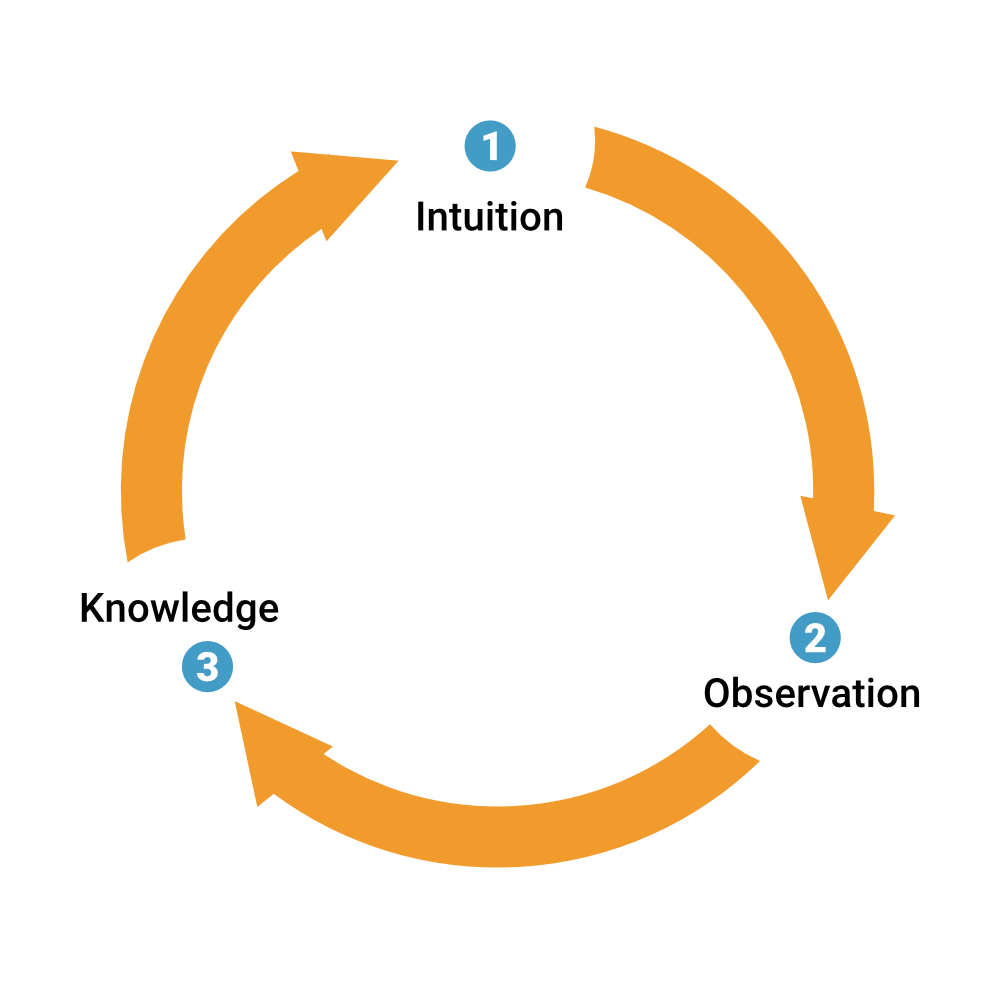
Phase 1
Intuition
Phase 2
Observation
Phase 3
Understanding
What I’m sharing with you is the methodology I used to make progress the whole time since I started playing. Believe me, it works without fail! Because once you’ve learned to stop and observe and feel what’s moving inside your body, you’ll achieve real understanding that comes from experience. The most solid and long-lasting form of knowledge and understanding.
However, be forewarned that learning in only this way can be a long path! It took me a long time, a really long time, to master the techniques using this method.
But I didn’t have any other choice: No one was there to explain things to me at the beginning!
Also, so you can avoid taking as much time as I did, I lay out for you the roadmap of skills in the correct order so you won’t get lost.
Here’s a short example of the path to follow, just to give you an idea:
The 6 steps to follow on the path to learning the didgeridoo
- First of all, you’ll learn to control your lips to give you a good drone sound. This is essential; it’s the base of everything that follows.
- Then you’ll start to play with your tongue to produce precise and delicate harmonics, enriching the solid drone you’ve learned in the first step.
- After that, you’ll learn or perfect “circular breathing” by mastering the movements of your cheeks and using belly breathing.
- Now comes the time to develop your dynamics by learning the three most important fundamental attacks.
- Now you have the skills to create your first didgeridoo rhythms.
- Finally, you’ll be able to learn more advanced techniques such as toot sounds, pedal tones, and using your voice to enrich your sound.
I’ll guide you through these 6 steps (and a lot more) in my course “The Art of the Didgeridoo.” I designed it so people like you can learn the fundamentals of the didgeridoo from my clear, accessible, and precise language.
Have a look at the syllabus below!
Detailed Syllabus
- Prerequisites: none
- Overall length: almost 8 hours!
- Number of videos: 119
- Number of lessons: 11
- Follows my Ebook: “How to play your first rhythm on your didgeridoo”
- Intended for: Anyone wishing to learn or review the fundamental didgeridoo skills.
16 videos | 49 min
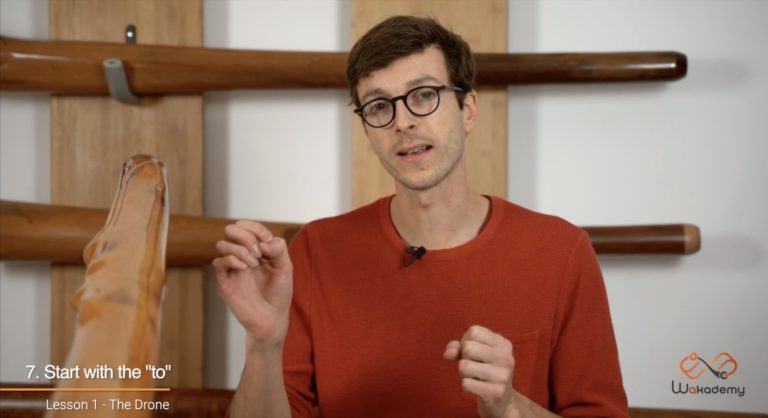
Lesson 1 – Lips
Make a stable drone
In this lesson, you’ll learn:
- How to make a stable drone that doesn’t take all your air
The reasons your sound might not be clear - How to master your drone, the foundation of your success in learning circular breathing (and the rest of your didgeridoo study)
- How to clean up your rhythms if you are more advanced
10 videos | 43 min
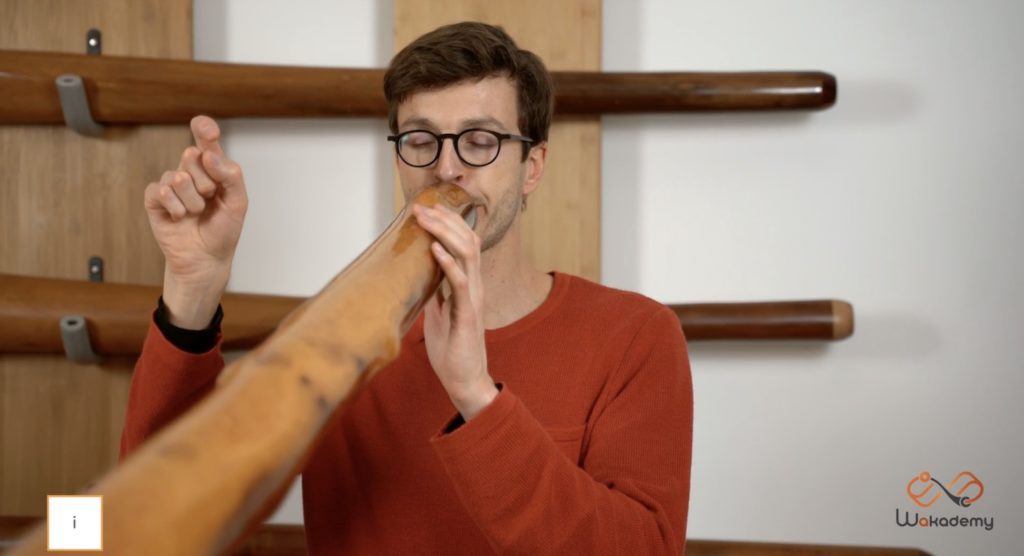
Lesson 2 – Tongue
Refine your sound using harmonics
In this lesson, you’ll learn:
- How to refine your sound by mastering the 4 principal harmonics
- Some new vocabulary to extend your power of expression
- To make your sound clear to punch out your rhythms
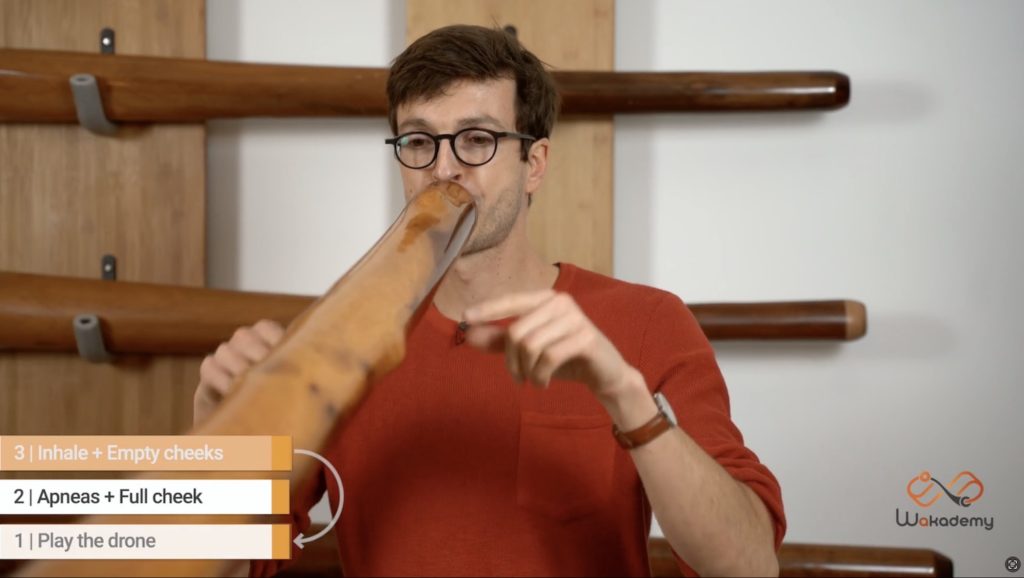
Lesson 3 – Breathing
Master (finally!) circular breathing
In this lesson, you’ll learn:
- To be able to play without stopping by following 4 simple steps
- To play as long as possible (extending your practice time)
- To smooth your circular breathing to fill any remaining gaps in the drone
- To experience the joy when the movements of circular breathing click into place and become self-reinforcing
7 videos | 28 min
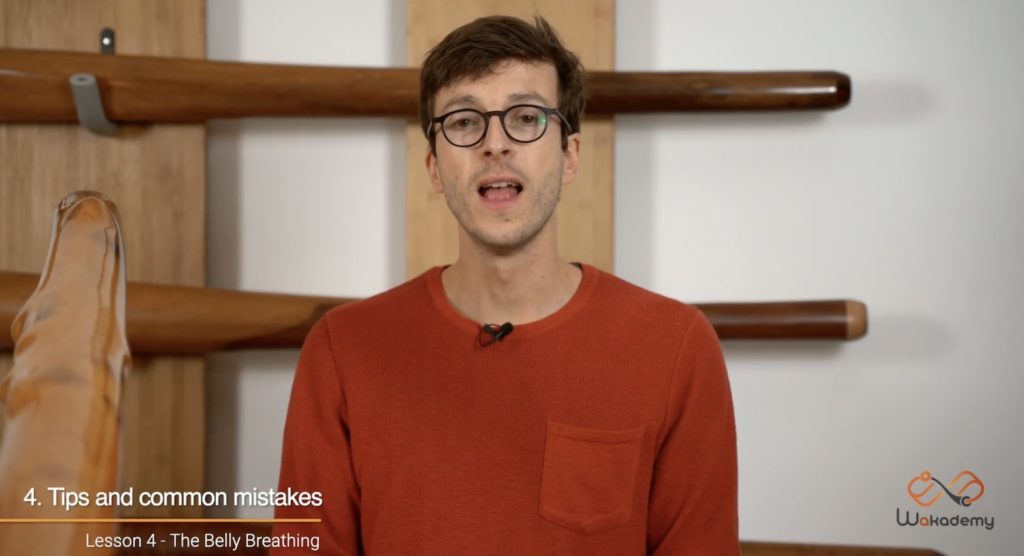
Lesson 4 – Diaphragm
Reduce the quantity of air needed by using belly breathing
In this lesson, you’ll learn:
- To play with less air to lighten your load!
- To have a powerful breath to undergird your playing
- To relax while still playing music
- To concentrate on your breathing and avoid other thoughts
- To gain fluidity and ease of playing
9 videos | 50 min
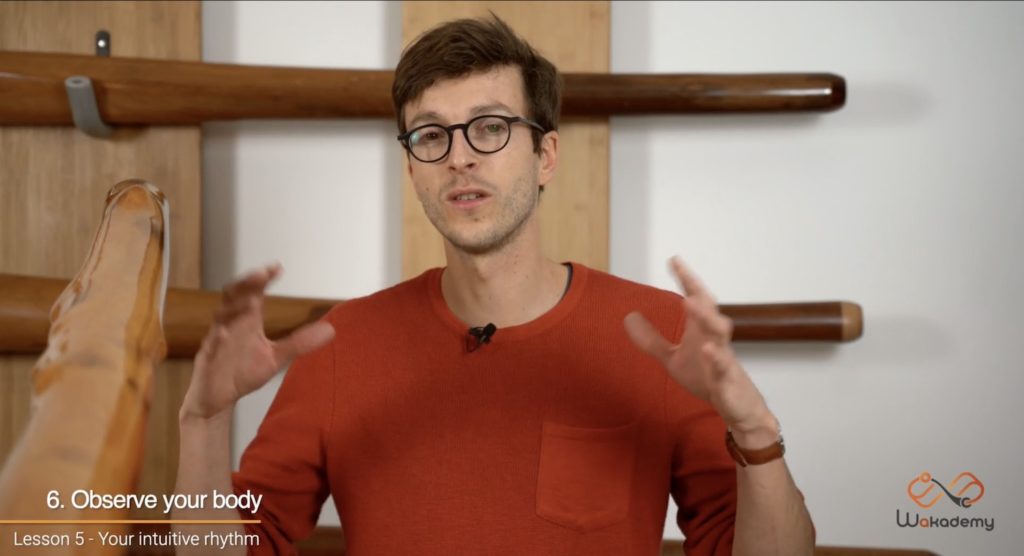
Lesson 5 – Intuition
Have fun playing your
natural rhythms
In this lesson, you’ll learn:
- To discover rhythms you like
- To alter your rhythms beginning with what you know
- To explore the nearly infinite possibilities of the didgeridoo, beginning with your breath
- To be able to spontaneously invent and play a rhythm without thinking ahead by just letting your didgeridoo lead you
- To gain fluidity in your playing
15 videos | 60 min
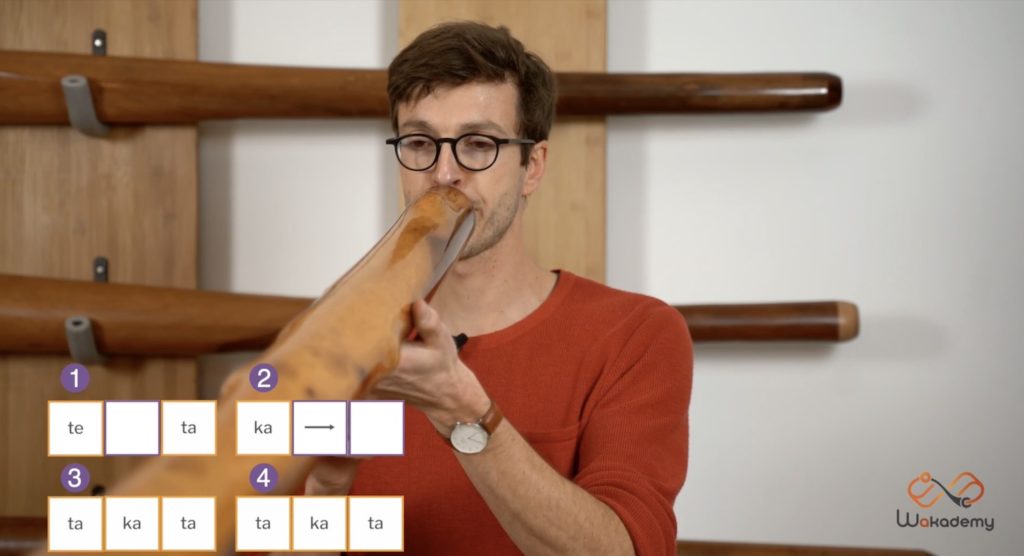
Lesson 6 – Tongue and Throat
Use these 3 attacks
to enliven your rhythms
In this lesson, you’ll learn:
- To master the 3 fundamental attacks
- To diversify your rhythms
- To play catchy rhythms that get into the groove!
- To create contrasts within your rhythm patterns
- To add dynamics to your playing and avoid the trap of “rhythm fade”
9 videos | 35 min
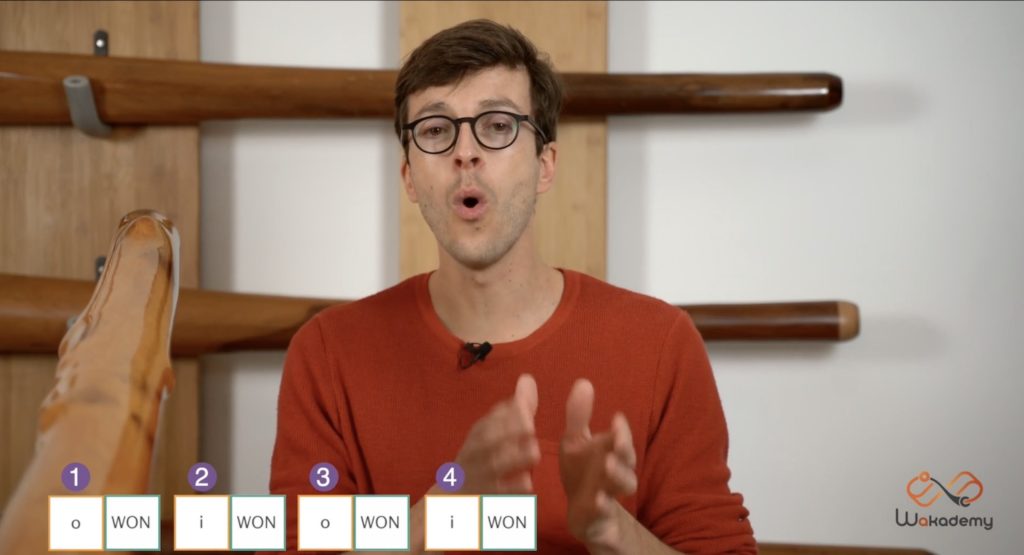
Lesson 7 – Composition
Compose and play your first rhythms!
In this lesson, you’ll learn:
- How to construct a rhythm on the didgeridoo and how to articulate it
- About the 3 major variations that make interesting rhythms
- How to piece together harmonics and attacks to enrich your rhythm patterns
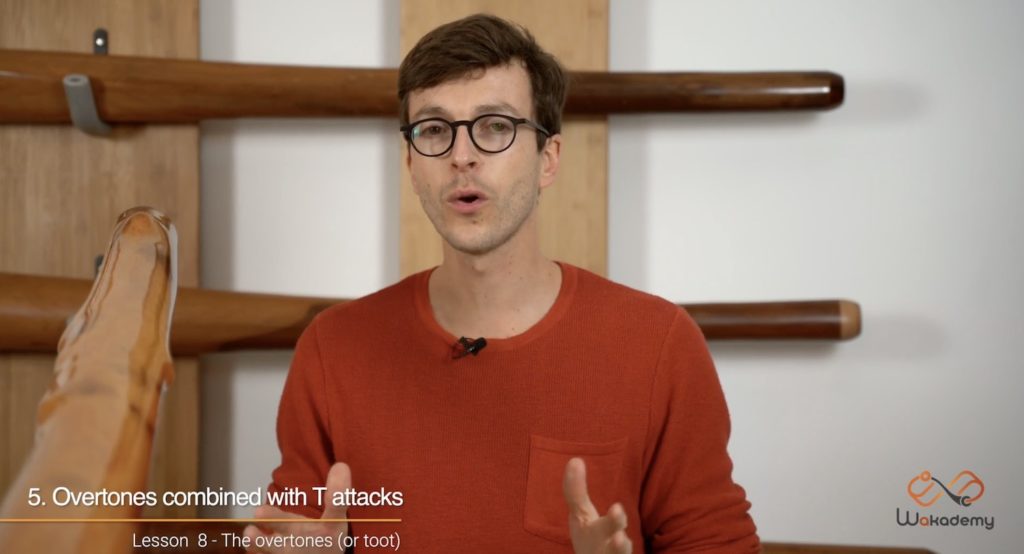
Lesson 8 – Lips, more advanced
Overtones and percussive sounds
In this lesson, you’ll learn:
- To work on the corners of your lips to quickly gain a clean and stable sound (adding to what you learned in lesson 1)
- To cultivate a strong sound
- To stabilise your lips by controlling pressure
- To diversify your rhythms by adding a percussive sound
8 videos | 26 min
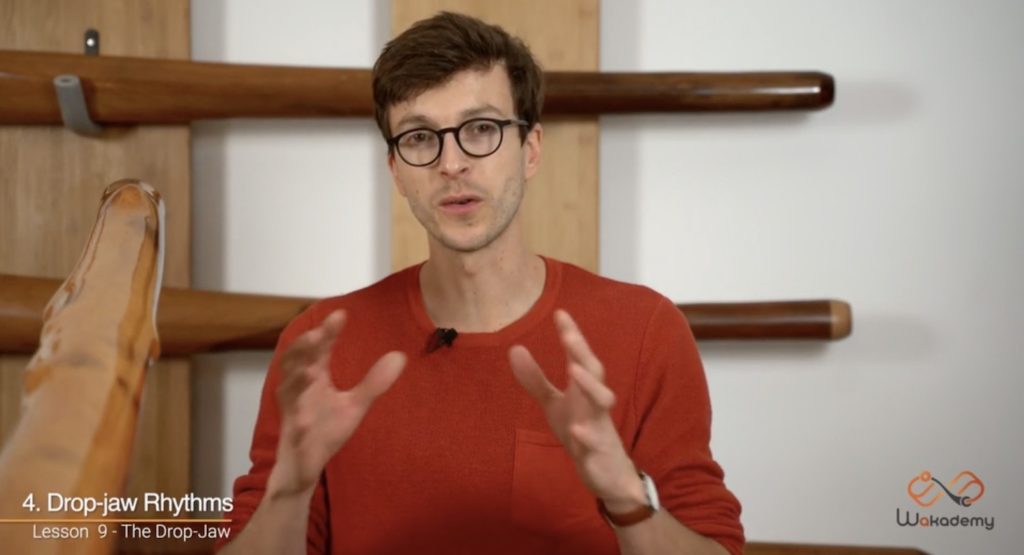
Lesson 9 – Jaw
Drop-Jaw, the effect of slowing down
In this lesson, you’ll learn:
- To be aware of your jaw and use it to add flexibility to your rhythms
- To work on your didgeridoo’s bass sounds to get some groove going
- To avoid rigidity and/or sounding tense in your playing
11 videos | 41 min
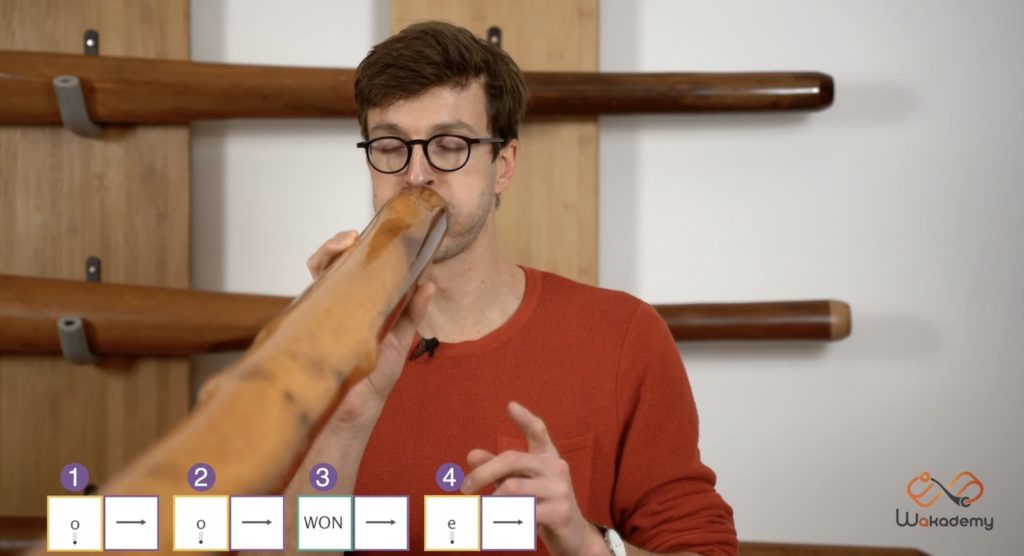
Lesson 10 – Voice
How to sing into
your didgeridoo
In this lesson, you’ll learn:
- About another dimension, that of voiced and imaginative sounds
- To work on the three principles of voice: passive, growly, and falsetto
- To add some fun and surprising sounds to your playing
- To cultivate strange atmospheres, evoking images and sound colours…
9 videos | 41 min
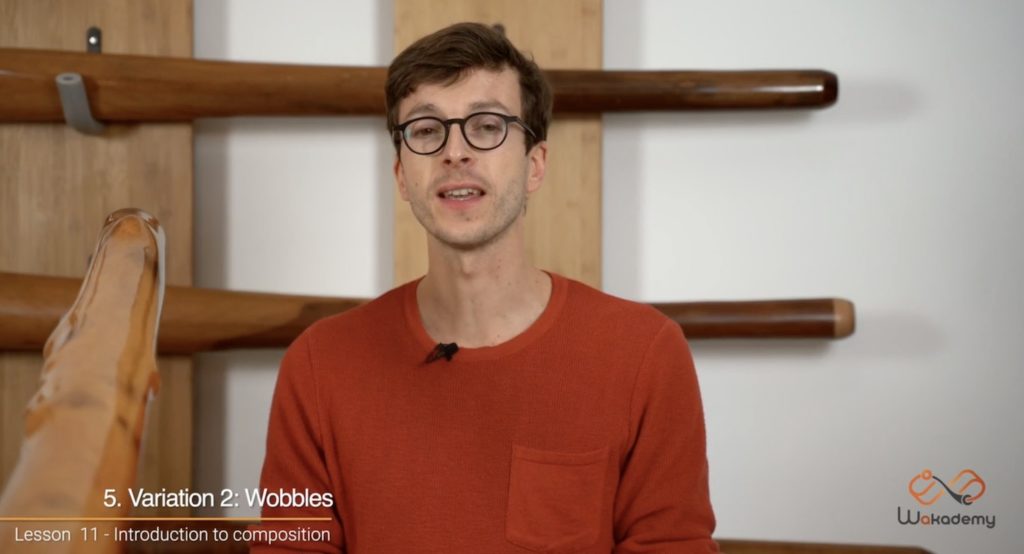
Lesson 11 – Composition, more advanced
Fly high by composing
your own rhythm patterns
In this lesson, you’ll learn:
- To change your routine and avoid going in circles
- To cultivate your own style of play and be able to play with other musicians
- To construct rhythm patterns that you and your listeners like
- To become a better musician!
- To better understand the possibilities of the instrument and how to gather together all the techniques.
And there's more!

Bonus 1 | one-on-one personal
instruction via video
Send me one video each month (for 6 months) and I'll send you an audio recording of my personalised comments!
- To motivate you with the cutoff date means the end of procrastination!
- And so I don’t get in over my head with dozens of videos arriving years later! 😬
In practice, it works like this:
NB: This example is in French, but I will do exactly the same in English for you!
STEP 1: Géraldine played for a few weeks and she felt she made progress. In her video, she highlighted rhythm and voice (falsetto cries). She shared her video on the forum (it could also have been via WhatsApp).
STEP 2: I sent her my personalised advice to keep her on the right path and help her with any issues in her playing (usually the duration is between 5 and 10 minutes).
My thanks to Géraldine for allowing her video to appear here!

I'm at your disposal to answer your questions that may arise.
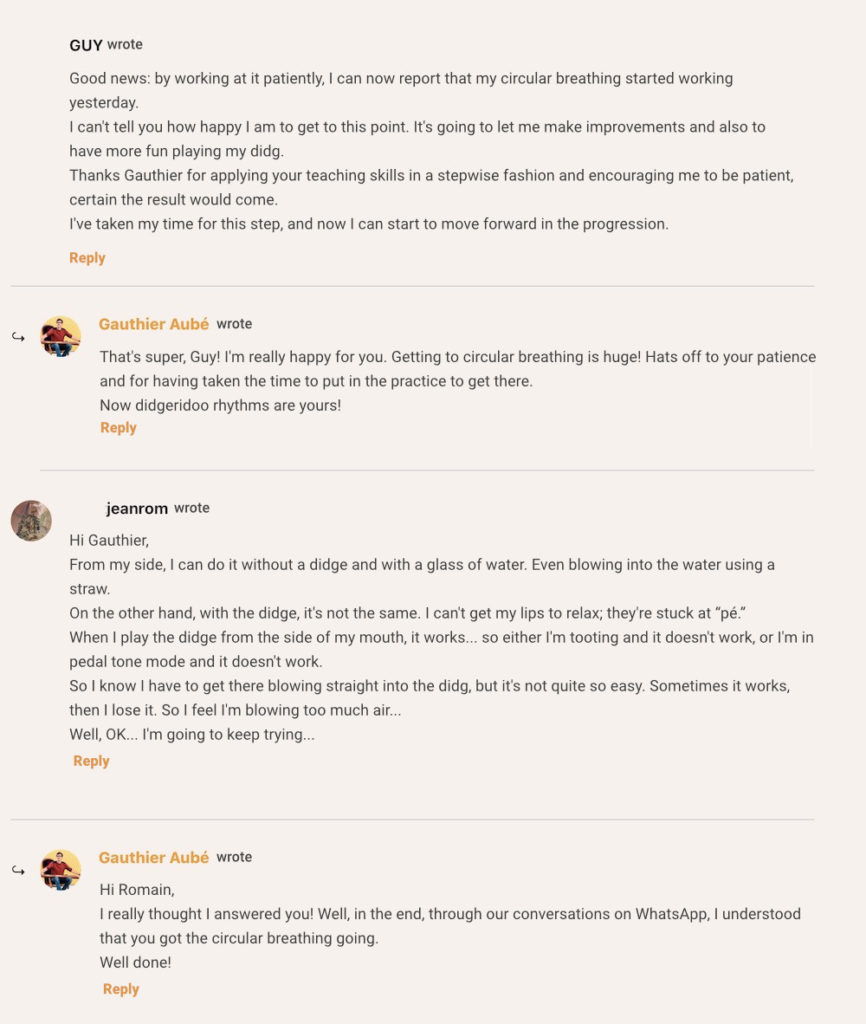

Download the course as a podcast
You commuters will like this. You’ll receive the course as an audio podcast extracted directly from the course videos! You’ll be able to keep up with the course while on the go.
So you don’t have to be confined to your seat in front of your computer or tablet.

Bonus 4 | Free E-book
How to play your first rhythm
on your didgeridoo
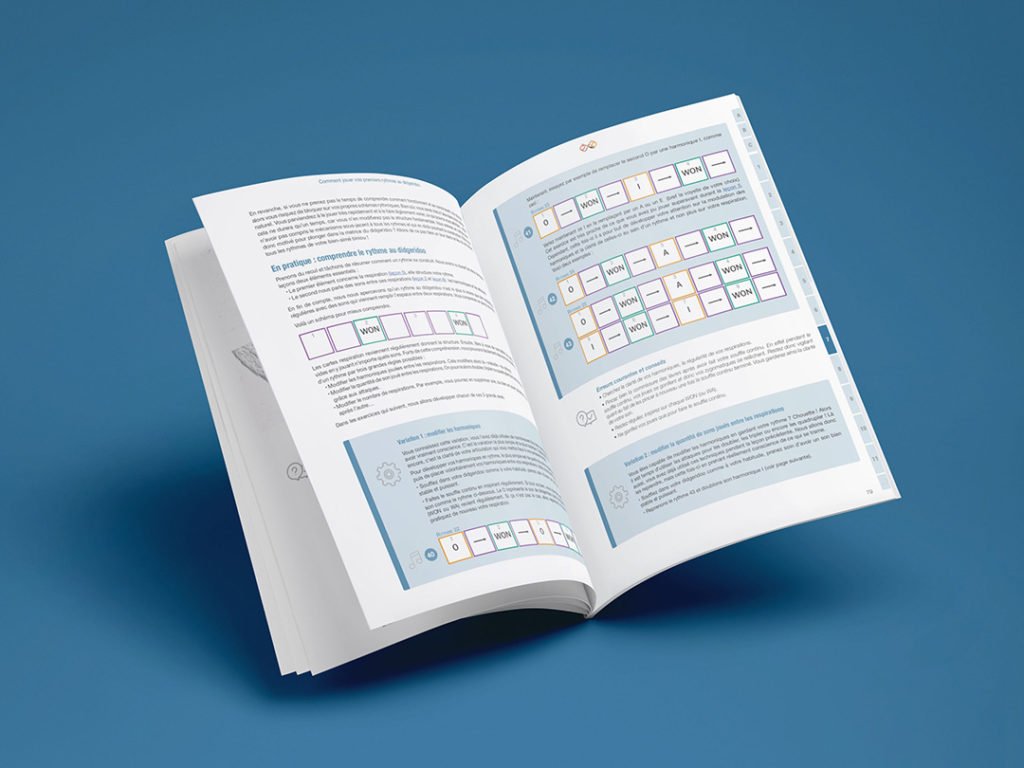

Bonus 5 – Wakatoo
More than 100 didgeridoo
rhythms with Wakatoo.
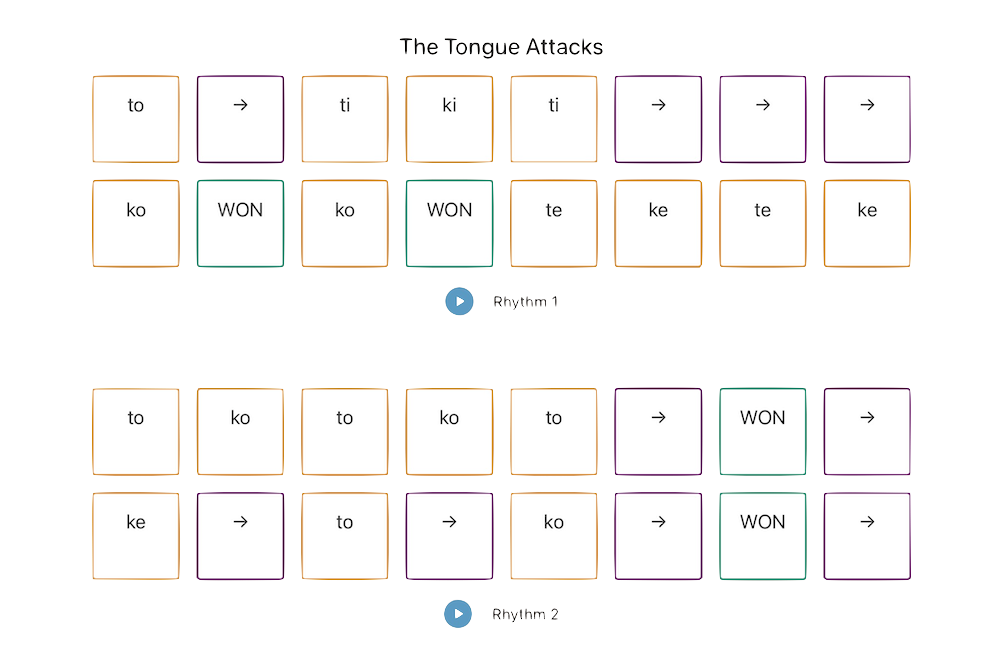
Wakatoo is an application for constructing didgeridoo rhythms. Then just click the play button to hear the rhythm you’ve just constructed!
You’ll receive 100 Wakatoo rhythms along with “The Art of the Didgeridoo”!
Of course, the sounds you’ll hear are generated by the computer, but you’ll see that it’s a very useful tool for working on your rhythms!

30€ discount on a workshop
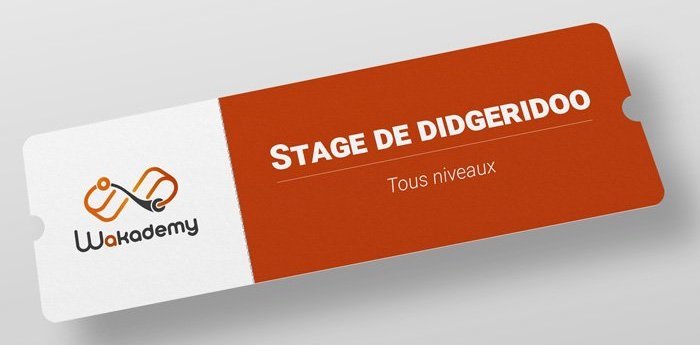
Workshops are a very special time for people to meet and share. It’s also a great time to check your learning and overcome any impasses that have stymied your progress.
To help assure an even better follow-up, I’ll give you a discount coupon worth 30€ off a workshop taken during the 2 years following the course purchase date.
What you will take away from this course:
- You'll finally master circular breathing
- You'll learn the correct ways to breathe while playing your didgeridoo
- You'll get personalised feedback with concrete advice for your progress in the exercises
- You'll get control over your breathing so it becomes an advantage rather than holding you back
- You'll play music, and have fun doing it!
- You'll follow a structured and stepwise methodology
Inscrivez-vous et
commencez les cours dès maintenant !
Sign up and start
learning right away!
- Unlimited access to the course
- 11 stepwise lessons
- More than 5 hours of teaching
- 130 videos
- 100 Wakatoo rhythms
- Ebook + mp3 (a 49€ value)
- Podcast version of the course
- 1 year of personalised answers to your questions
- 6 months of follow-up
- 30€ discount on a workshop
- Access to the Wakademy private forum
- 20% jusqu'au 8 décembre !
My name is Gauthier, and I am the founder of Wakademy.
You may wonder who I am to assert all these truths! Therefore, let me introduce myself briefly in a few lines.
My name is Gauthier Aubé, and I have been playing the didgeridoo for 20 years.
I have released three albums, performed numerous concerts, and have had thousands of students around the world. I have been fortunate to teach and perform in most European countries, including Russia and Taiwan, as well as cities like Lisbon, London, Budapest, Amsterdam, Berlin, and many others!
Since the launch of Wakademy in 2018, my focus has primarily been on conducting workshops in France, Switzerland, and Belgium. Not out of chauvinism, but rather to limit my travels in the face of an increasingly wounded planet.
Additionally, providing the opportunity for everyone to learn the didgeridoo directly online seems like a great alternative.
I have literally dedicated my life to the didgeridoo, and I work hard (as I manage Wakademy alone) to popularize the learning of this wonderful instrument to as many people as possible. That’s the essence of it!
Ils ont suivi « L’art du didgeridoo »

5/5
Based on more than 240 opinions



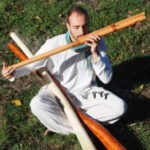








Summing up, by taking this course, you're going to:
- Learn to breathe while playing your didgeridoo
- Follow exercises along with tangible advice
- Get control over your breathing so it becomes an advantage rather than holding you back
- Play music, and have fun doing it!
- Follow a structured methodology
- Let your creativity come through and become a musician
Questions and Answers
After purchase, you’ll have a lifetime of access.
This video course is designed for people who:
- Are total beginners who know little or nothing about the didgeridoo
- Have been playing for several years and are starting to encounter impasses in their development without being able to put their finger on the problems.
- Don’t have teachers nearby, yet want to learn the basics
- Can’t get motivated on their own to play their didgeridoo regularly to gain proficiency
- Find themselves going in circles, not able to eliminate bad playing habits
- Played a bit 20 years ago and look longingly at their didgeridoo thinking they ought to take it up again…
- Got discouraged when they couldn’t find structured and stable lessons
- Want the fun of playing, without feeling like they have to be the best
- In the opposite case, want to be the best, but they know getting the fundamentals down pat is the first step
- Suffer from sleep apnea
I know about that! When I started, I also took courses and workshops, but I can say they weren’t that much help.
I often had the feeling the explanations weren’t clear enough.
So I developed my teaching around practical observation. I’m committed as a teacher to explain in simple terms how to master all the techniques I include in my courses.
I totally get the idea of being afraid or doubtful about signing up for an online course.
The big advantage of online instruction is having access to exercises and guidance that they haven’t been able to get elsewhere because it’s so hard to find local teachers!
You can also move forward at your own pace by taking in the videos as you have time, learning right from home.
In addition, I designed Wakademy to make your learning as easy as possible. It’s simple, refined, and ergonomic. I studied and optimised the whole problem. All the videos are organised into lessons to be worked through in a chronological order.
Also, with internet security in mind, the Wakademy site uses HTTPS to securely encrypt your personal data.
Finally, if there’s any problem whatsoever, you can contact me directly via my WhatsApp account (or by email).
Yes, the course has a price. I think of it like signing up for a year of music school.
My intention is to provide you with value far beyond a collection of online videos, even as good as they are. Indeed, thanks to the feedback system where you send me videos of your playing, to the community of other students, and to our ongoing conversations, you’ll feel like you’re in a music school, not like watching a screen alone at home.
Signing up is also getting the personalised guidance for your playing, having a source of motivation, a reason to move forward on your path to mastery.
Additionally, I give my all in these courses. Look around, but you won’t find this level of precise explanation and clarity elsewhere, even in Australia! I spill it all out for you, what I’ve learned in my years of research and thousands of hours of teaching, playing, and solving problems.
Finally, I’m happy to have you make several monthly payments so the course fee works within your budget.
No one can do any better than that for you!
I touched on the idea of time above, and I’m not going to spread the falsehood that you can learn an instrument without putting in some time. In fact, the more you play, the better you’ll play.
To get the most out of the lessons in this course, I recommend from experience that you give it 15 minutes per day or 30 minutes every two days. That’s not even 2 hours per week.
And that 2 hours includes practicing with and without your didgeridoo, and also the video, paper-based, and podcast follow-up.
Being able to learn while in the shower, at the wheel of your car, and while walking around can in fact save you a lot of time!
I’ll prove that you can learn a lot of didgeridoo without actually blowing into one!
Finally, if you want to make progress on the didgeridoo without spending a lot of time, you’ll be smart to recognise this course will save you countless hours in the long run. As I described just above, you’ll only have to apply what I teach you in the videos by practicing the targeted exercises I give you.
Playing didgeridoo is based on your body, which in fact is the real instrument. And I’ll repeat that several times during the course!
If you follow my advice, you’ll discover that every sound amplified by the didgeridoo starts somewhere inside of you, and we’ll pinpoint those places.
For example, I’ll show you how to get control over your lips (Lessons 1, 8, and 9), your tongue (Lessons 2, 3, and 6), your throat (Lesson 6), your belly (Lesson 4), your voice (Lesson 10), and bring it all together in Lessons 5, 7, and 11.
I like concepts that are tangible because they can be easily imitated by everyone. That’s why I have complete confidence in my course and in your success.
While the video content is based on my book « How to play your first didgeridoo rhythms”, there’s a big difference between the two products. Here’s why:
- The video format is much more like a face-to-face course. During those videos, I’m there with you, like a private lesson. You’ll see me play, pinch my lips together, inflate my cheeks, share a tip. It’s close to having a live presence, and that changes everything!
- The video follow-up system where you’ll send me videos of you playing also changes everything. Because we’ll have a real conversation around your playing. As though I were right there with you.
- The guidance I provide all along the way will answer all your questions. It’s the time to have a real teacher with you.
- The Wakatoo rhythms will be a big help when you want to start composing your own rhythmic sequences.
- And that workshop discount of 30€ is nothing to sneeze at.
- In short, you have a textbook which is way better than finding your own way without any help, but it can’t compare with taking a course with a teacher (almost) at your side.
Yes! But it will be far more than that!
In a workshop, there’s typically just enough time to cover ten exercises, because we have to spend a fair amount of time on each.
This course gathers together all my best exercises for learning or further improving skills in didgeridoo fundamentals.
Sure, you’ll recognise some of them, but you’ll still find a lot of new ones. I think of my workshops and courses as complementing one another.
In fact, those 7 circular breathing videos are part of this course.
However, Lesson 3 on circular breathing in this course contains 18 videos, and the complete course is 144 videos!
That’s 137 additional videos for you.
I’ll let you decide whether there’s much in it for you :-).
Even more comments
from students

5/5
Based on more than 240 opinions
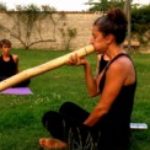








Learning to play didgeridoo requires an investment
It’s a choice.
You have to decide whether to take the time for yourself and to sit yourself down for at least 15 minutes.
Once again, I’m well aware of the challenges of daily life, and I don’t have any comments about your particular choices! Life is so vast! But it’s my role as “teacher” to encourage you to question your priorities.
And clearly, even if I’m not a completely neutral party here(!), I’m convinced that if you read what I’ve written here, this course will help you achieve your desire to learn to play.
Try it, and if you're not satisfied, I'll reimburse you.
Sign up and start
learning right away!
Les inscriptions sont fermées !
Réouverture le 1er décembre 2021 à 19h !
- Unlimited access to the course
- 11 stepwise lessons
- More than 5 hours of teaching
- 130 videos
- 100 Wakatoo rhythms
- Ebook + mp3 (a 49€ value)
- Podcast version of the course
- 1 year of personalised answers to your questions
- 6 months of follow-up
- 30€ discount on a workshop
- Access to the Wakademy private forum

